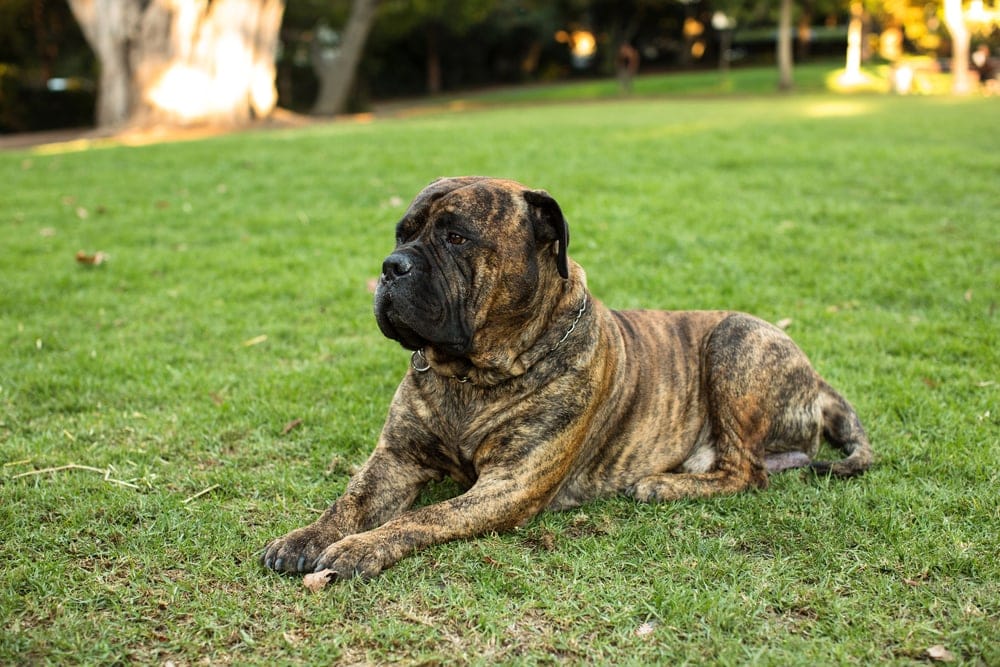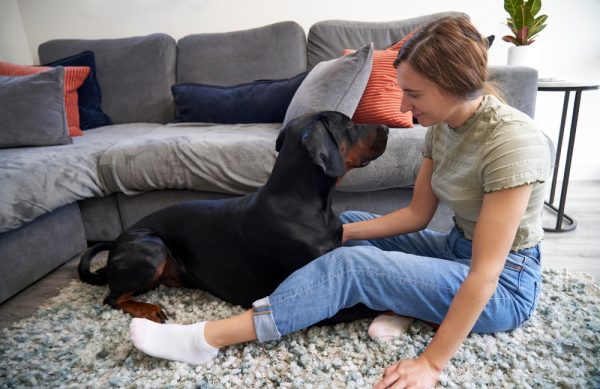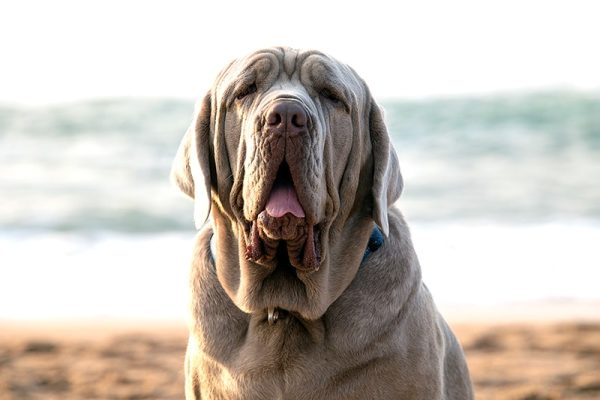The large Bullmastiff is a powerful dog breed known for their loyal, loving, and protective nature. Despite their intimidating appearance, a well-trained and socialized Bullmastiff can be as cuddly as a kitten but as fearsome as a lion. One of the most appealing aspects of this dog breed is their resilient and protective nature, which makes them good guard dogs. The Bullmastiff typically has a simple coloration with little patterning that is typically located on their head and chest area.
The Bullmastiff is found in relatively few colors and patterns, six of which are recognized by the American Kennel Club (AKC) as part of the breed standard. Let’s take a look at those colors, as well as those not on the AKC-approved list.

Quick Overview of Bullmastiffs
| Breed name: | Bullmastiff |
| Life expectancy: | 7 – 9 years |
| Height (adult): | 24 – 27 inches |
| Weight (adult): | 100 – 130 pounds |
Let’s take a look at the seven standard colors and patterns that are formally recognized for a Bullmastiff below.

The 6 Colors of the Bullmastiff Breed Standard
The following colors are recognized by the AKC as part of the breed standard, all of which must have a dark or black mask. A primary feature of the Bullmastiff is their black facial mask, which covers their wrinkled muzzle, eyes, and ears. This dark facial mask is easily distinguished in red- and fawn-colored Bullmastiffs, but it can be harder to spot in darker and brindle Bullmastiffs. Despite this, the outline of the black mask will still be slightly visible. The Bullmastiff may also be seen in a few other color/pattern variations, but these will not be accepted in an AKC show or competition.
1. Fawn
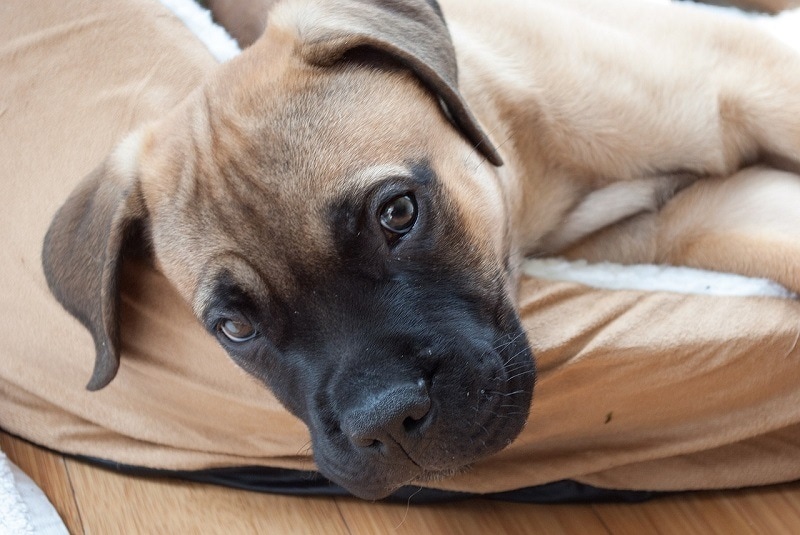
Fawn is the most common color found in Bullmastiffs, and it is recognized as a breed standard by the various kennel clubs. The fawn coloration can be described as a type of light tan color mixed with cream-colored hair, and it is usually paired with dark markings on the Bullmastiff’s face. You can also find fawn Bullmastiffs with a brindled coat, which appears as a mixture of fawn and darker-colored hairs that blend into each other.
2. Fawn Brindle
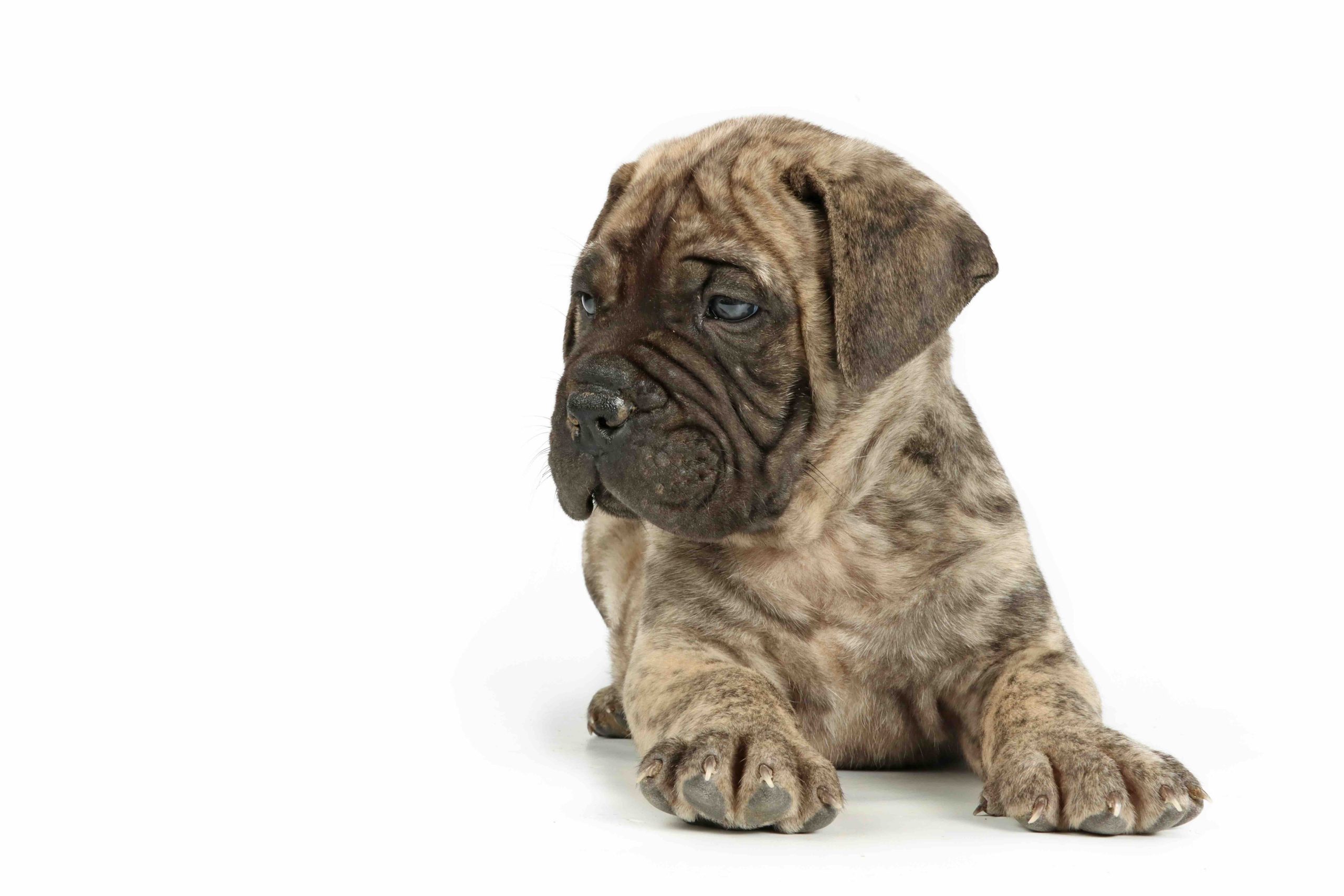
These have the same base color of the fawn dogs, but with the classic brindle ‘tiger stripes.’
3. Red

The red coloration is excellent at accentuating the breed’s muscular body, and it pairs well with any patterns the dog may have. This coloration isn’t exactly red, but rather a dark or light rusty brown coloration that is registered as a standard color in the breed. Just like the fawn coloration, red Bullmastiffs can have red-brimmed fur. This makes the Bullmastiff appear dark, with what seems to be subtle tiger stripes throughout their coats.
4. Red Brindle
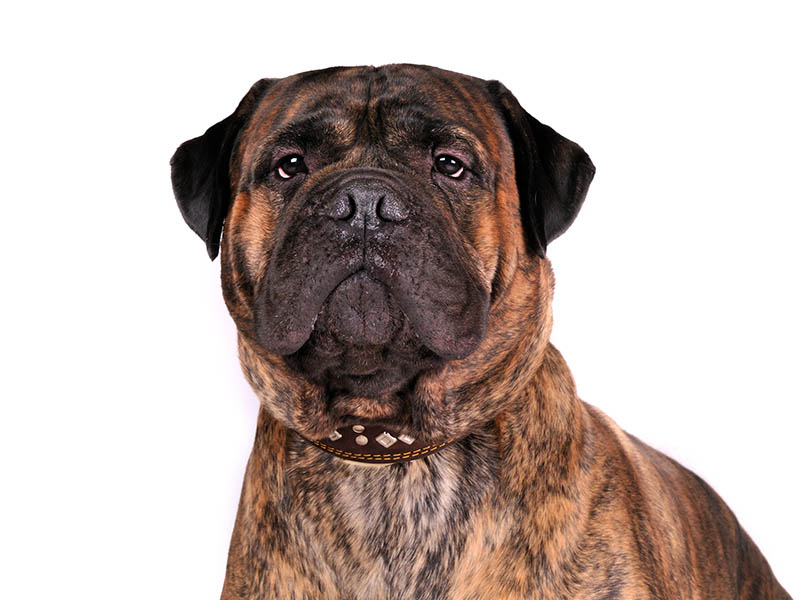
Just like the fawn coloration, red Bullmastiffs can have red-brimmed fur. This makes the Bullmastiff appear dark, with what seems to be subtle marbling throughout their coats.
5. Red-Fawn
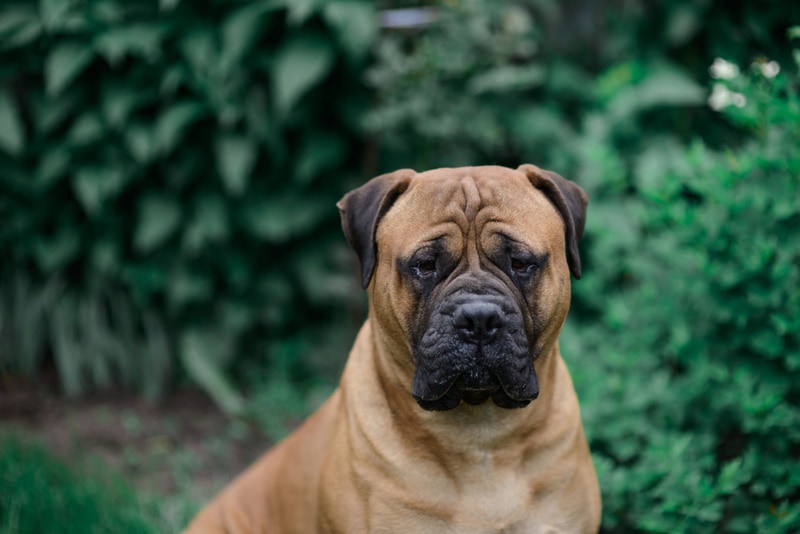
The red and fawn-colored Bullmastiff has a coat that appears as a lighter brown and tan color. It’s a combination of two common coat colors that can be seen in Bullmastiffs – the best of both, you might say!
6. Red-Fawn Brindle
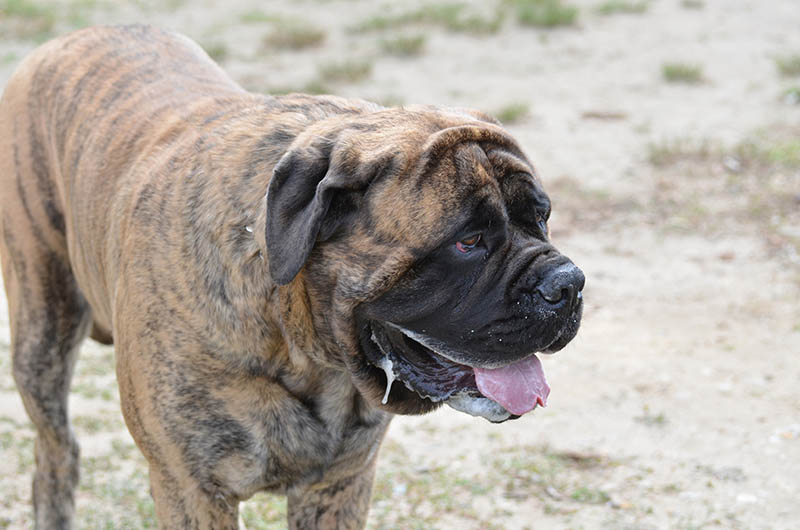
You might have noticed a pattern here, and that pattern is brindle! Just like the previous shades, the red-fawn Bullmastiff can also be found in a brindle variety. Due to this shade being partway between the fawn and the red, it will take a trained eye to distinguish a red-fawn brindle.

The 3 Non-Standard Bullmastiff Coats
Although the AKC does not formally recognize these coat variations, that doesn’t make them any less worthy or beautiful. In fact, one could argue that these deviations from the standard make them more unique.
1. Black Markings
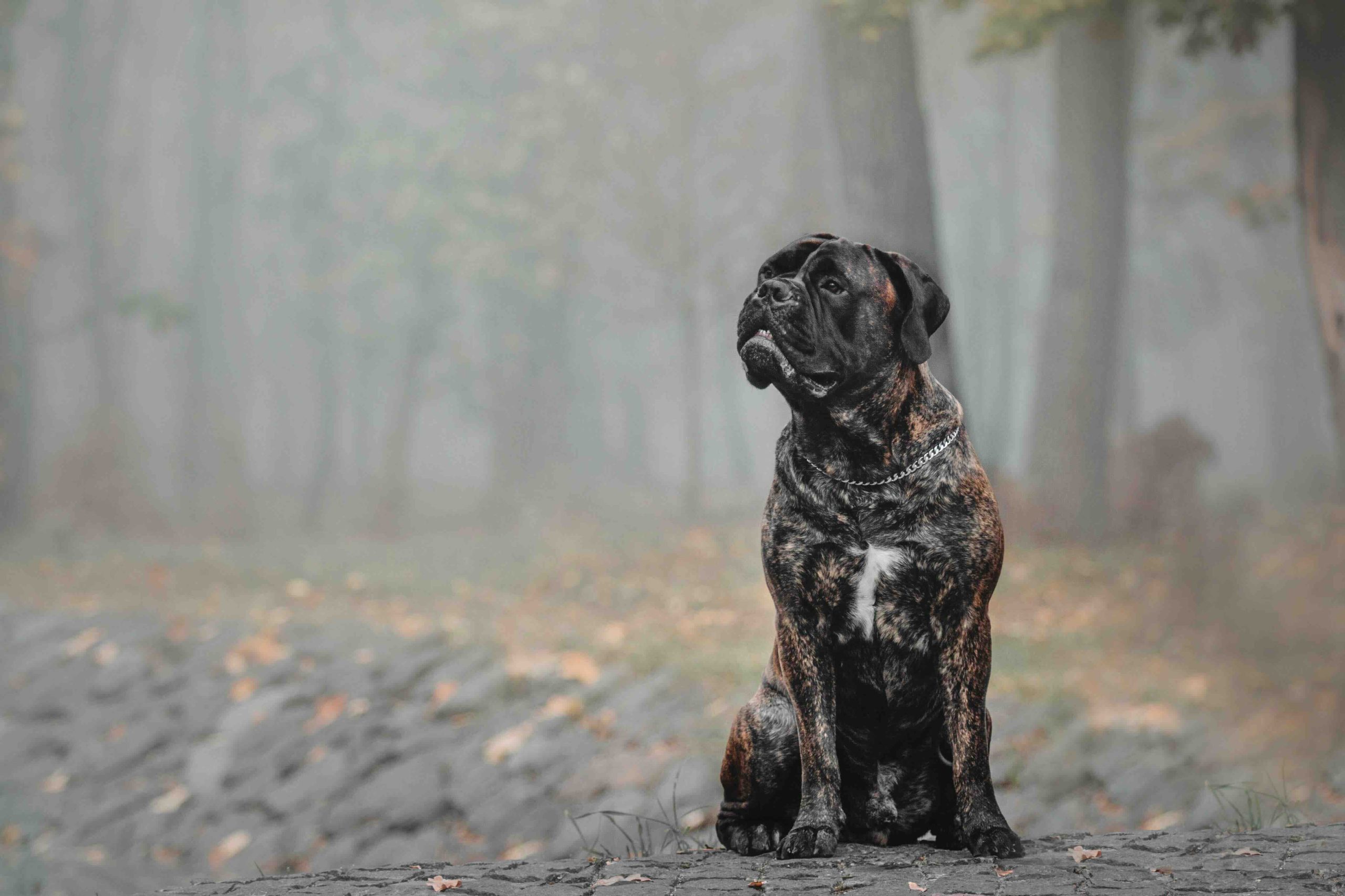
Although the brindle Bullmastiff is recognizable by the black marble or tiger striped pattern through their coat, black markings beyond this pattern are considered a non-standard variation. They are not very common, but also quite striking.
2. Black Mask with White Markings
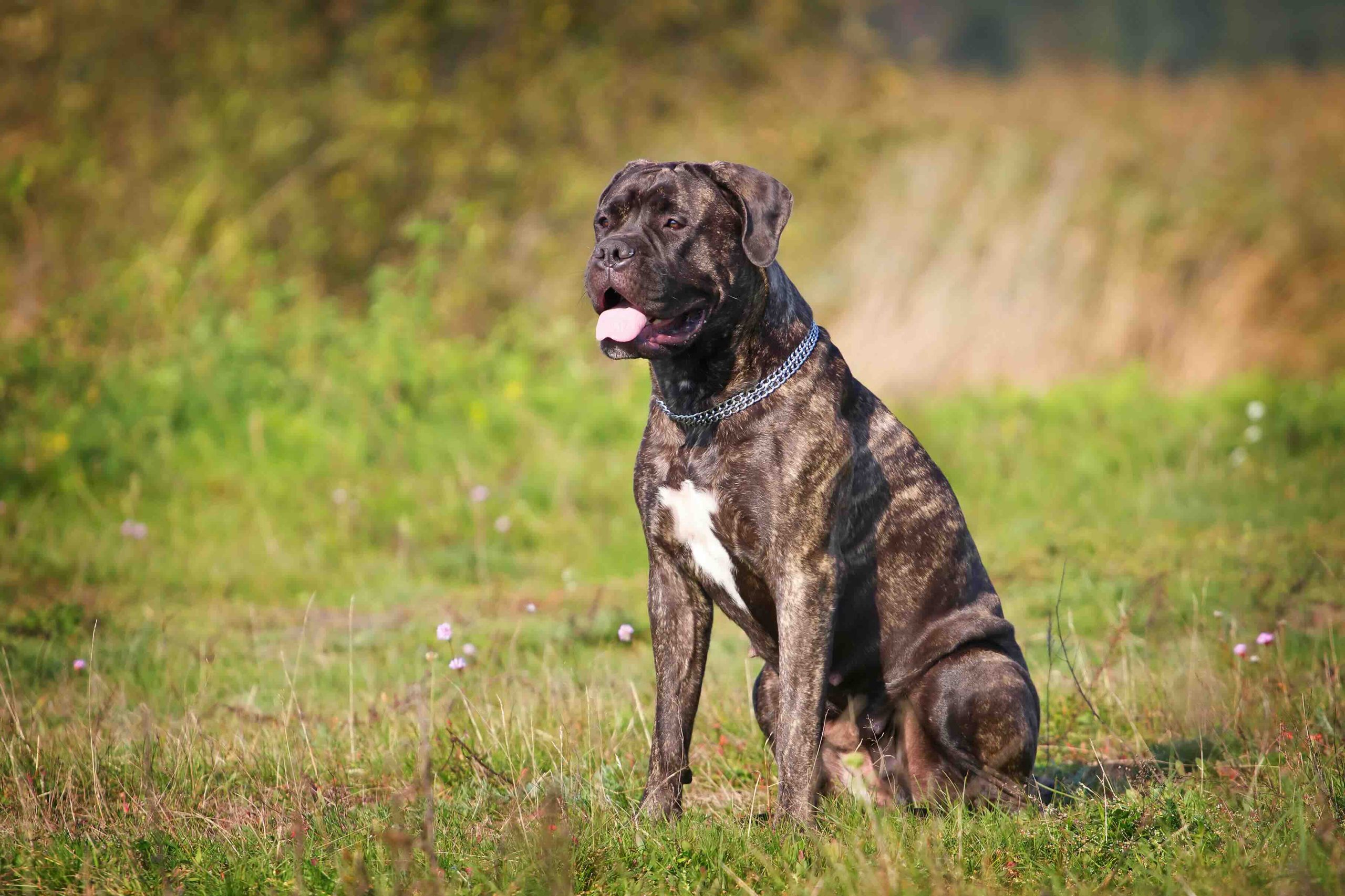
In the judging arena, a small patch of white on the chest may be overlooked, but large areas are not acceptable – how rude!
3. Fawn Mask
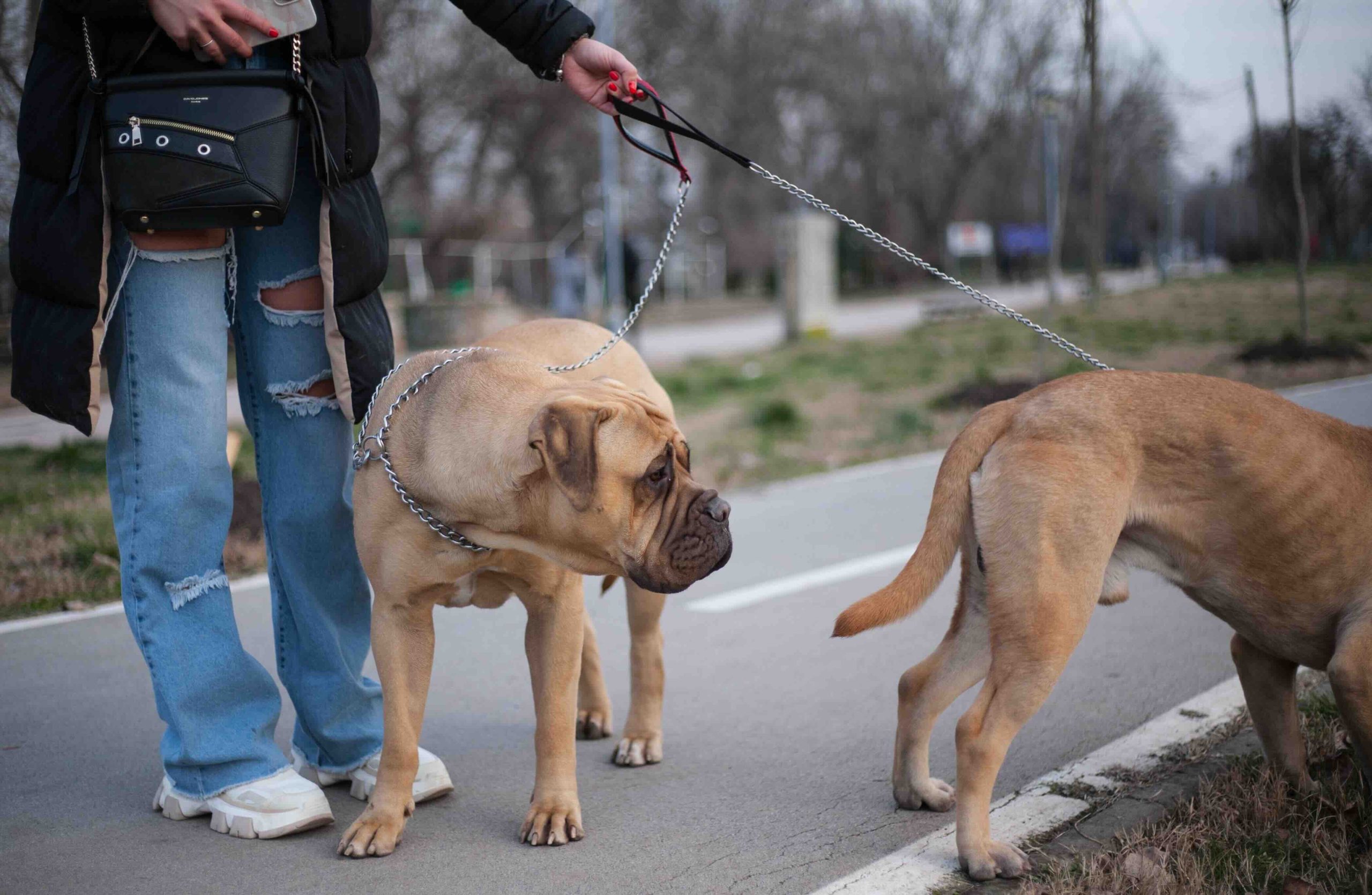
Another unusual coat variation is the light or fawn mask. As these are not recognized by the AKC, any color or coat pattern that sports a fawn mask is considered to be a non-standard color. They are also so uncommon that it has been very difficult to find an image of one. These dogs will usually still have some dark pigmentation around the muzzle, but it doesn’t extend to the eyes or ears.

Conclusion
It’s not unusual for dog breeds to have lots of different color and pattern variations, with only a few recognized by the AKC as part of the breed standard. In the case of the Bullmastiff, they come in a limited range of colors, with almost all of them found in the breed standard. The AKC colors are the Fawn, Fawn Brindle, Red, Red Brindle, Red Fawn, Red Fawn Brindle, all with a black mask (although this can be more difficult to recognize in darker brindle shades). You may also find the Bullmastiff with black markings, a black mask with white markings, or a fawn mask, but these are less common and do not form part of the breed standard.
It’s not uncommon to see a Bullmastiff with white chest markings, and although the breed standard allows for small white patches, dogs that have the striking white chest would be disqualified in the judging arena. Of course, this only matters if you are planning to show your dog.
Overall, solid colors are more common than the brindle, and in all cases, these are majestic, powerful, and loyal dogs.
See also:
- How Long Do Bullmastiffs Live? Vet Reviewed Facts & FAQs
- How Much Does a Bullmastiff Shed? Facts & FAQ
Featured Image Credit: Jen Dunham, Shutterstock
